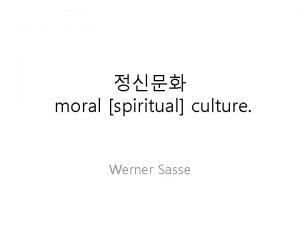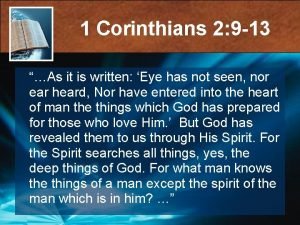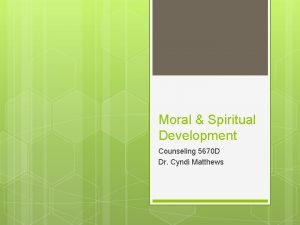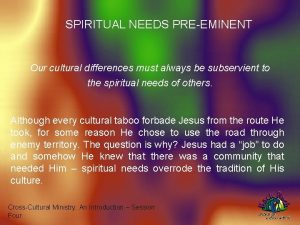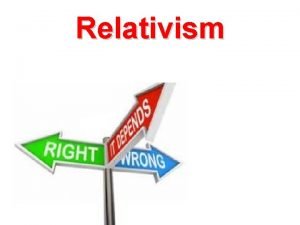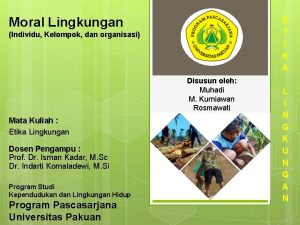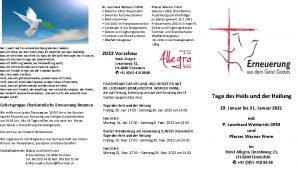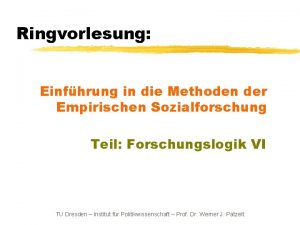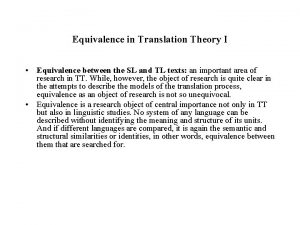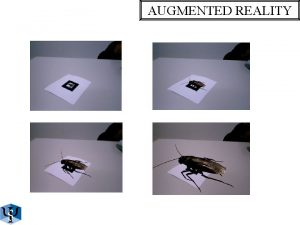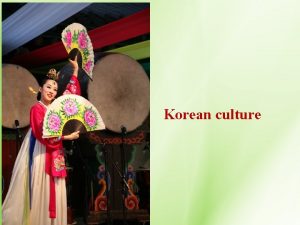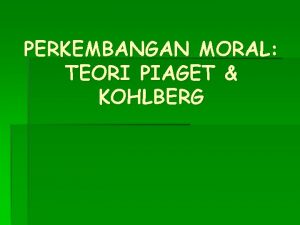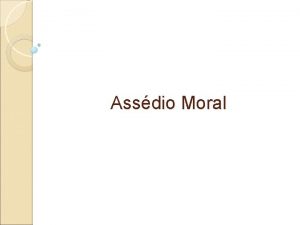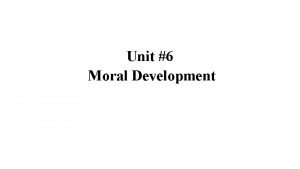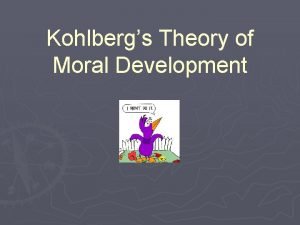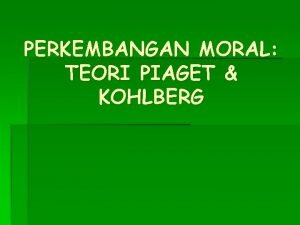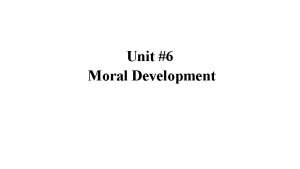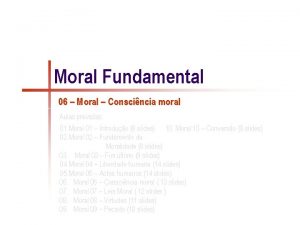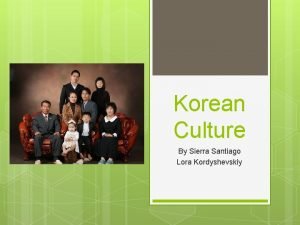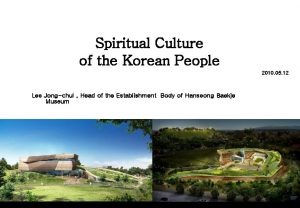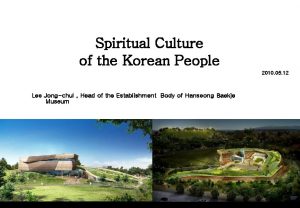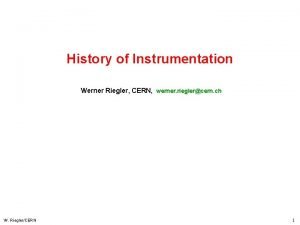moral spiritual culture Werner Sasse Reality of Korean
![정신문화 moral [spiritual] culture. Werner Sasse 정신문화 moral [spiritual] culture. Werner Sasse](https://slidetodoc.com/presentation_image_h/e649210880a9d858f4c51728ab5a3d6c/image-1.jpg)





































- Slides: 38
![정신문화 moral spiritual culture Werner Sasse 정신문화 moral [spiritual] culture. Werner Sasse](https://slidetodoc.com/presentation_image_h/e649210880a9d858f4c51728ab5a3d6c/image-1.jpg)
정신문화 moral [spiritual] culture. Werner Sasse






실상 한국문화 對 상상 한국문화 Reality of Korean Culture vs. imagined Korean culture ======================== 실상 한국문화가 관찰하는 사람의 눈 앞에 체계적으로 조직되지 않고 있 는존재 관찰하는 사람이 머리 속에 체계적인 조직을 일으킵니다: 상상 “한국문화”란 사람과 사람의 눈과 머리에 일치하지 않습니다 “Real” Korean culture is the unstructured reality before the eyes of the observer The observer structures this reality in his head: imagined culture “Korean culture” in the heads of different persons is never identical, always individual


한국문화 현재: 신구(新舊) 사회의 충돌시대 current Korean society: collision of Old and New ------------------------------------전통 사회 - 현대 산업사회 집단의식 - 개성의식 자활경제(국내) - 국제경제 유일 관념 (유교) - 다(多)관념 사회적 부동성 - 사회적 유동성 동양문화 - 동/서양문화 group consciousness - individualism self-supporting / national economy - international economy single state ideology (Confucianism) - pluralism Social immobility - social mobility “East Asian” culture - Eastern-Western mix



삼국(!)영토지도 Territorial map of the 3 (!) Kingdoms

“삼국시대” (전통적 시대구분으로) • 고구려 • 백제 Goguryeo Baekche (? ) 37 BC – 668 AD (? ) 18 BC – 663 AD • 신라 Silla (? ) 57 BC – 935 AD • 본가야 대가야 Bon-Gaya Dae-Gaya (? ) 42 AD - 532 AD (? ) 42 AD – 562 AD 소위 삼국시대 중에 500년쯤 4국… 사실상 삼국시대 562 AD에서 668 AD까지 100년만 Of the (trad. ) 700 years “ 3”-Kingdom-Period for 500 years there were 4 kingdoms In reality a 3 -Kingdom-Period lasted 100 years




모든 종교와 관념이 사람에게 영향 줌 individuals are influenced by all of them Shamanism 무교 Christianity 기독교 Modern man: City life 도시생활 Democracy 민주주의 Capitalism 자본주의 Confucianism 유교 Buddhism 불교

무교 Shamanism 무당 모시는 신 (조력이나 조언 부탁함) 개인 수호신 (천사) 그뤂, 집단, 마을신 (대천사) 망령, 유령, 자연신 조상 수단/방법/과정 무가(노래), 주문 춤 / 황홀 공물 이야기 Shamans are communicating for help and advice with spirits - individual guardian spirits (angels) - group guardian spirits (arch-angels) ghosts - nature forces deceased ancestors method/technique: singing / incantations dancing [ecstasy/trance] offering story telling

도교 道敎 Daoism/Taoism 老子, (? 기원전 6 세기경 인식론적으로 사람/인간 중심 아니고 자연/환경 중심으로 된 철학 이상(理想): 자연에 따라 행동 우주의 도(道)다라 행동 자연을 주시함 의지(意志)작 태도나 행동 반대 (무위 無爲) Laozi /Lao Tzu, Lao Tse, Laotze, lived in the 6 th century BCE. In the center not MAN, but NATURE Ideal : observing, watching nature closely, following Nature’s / cosmos’ WAY (Dao/Tao) contemplating nature Contra : acting according to one’s own will (無爲) Later developed shamanic and magic practices, alchemy, …

도교 道敎 Daoism/Taoism • 한국에서 도교는 단독 종교 되기보다 도교사상이 정신문 화의 여러 분야에 영향을 미쳤다 [회화(繪怜), 명상, 문학, 자연과학] • 도교의 신 --> 무교와 불교에서 신 • 도교사상이 특히 살림 선비들 중에 유행했다 • Daoism in Korea did not form a separate religion, but heavily influenced spiritual culture (painting, meditation practices, literature, studies on nature) • Daoist gods became gods in shamanism and Buddhism • Daoist thinking and practices became fashionable among the literati, especially the sallim (country scholars)

불교 Buddhism 고타마(=~Búddha) 석가모니 (563? -? 483 B. C. ) 한국불교 4세기부터 한국은 대승불교 (보살(불)들 깨달음에 도와 줌) 선불교 (禪佛敎), (명상) 국교(國敎): 신라 ( - 935) 그리고 고려 (935 – 1392) 한국사람 중에 불교 믿은 사람 25% Siddhārtha Gautama (Sk) ca. 563 -438 BCE [Śākyamuni (“sage of the Shakyas”)] Came to Korea via China in the 4 th c. AD Mahayana B. Bodhisatvas can help to enlightenment Zen B. meditation State religion in Shilla ( - 935) and Goryeo (935 – 1392) Today ca. 50% of the 50% who claim to be religious

유교 儒敎 Confucianism 공자 (孔夫子) , (551 - 479 BC), 한국문화에 3세기부터 이조(李朝) 조선에 불교를 대신하여 유교가 지배적인 지위를 차지했다. 핵심으로 가족 또는 사람과 사람의 연분, 특히 효 (孝)는, 온 사회와 정치의 기초 원리로 삼았다 이상(理想) 학문 추구로 자기 자신을 수양하는 생활 Confucius (孔夫子; Kǒng Fūzǐ; , lit. "Master Kung, ” (551 - 479 BC) Became known in Korea in the 3 rd c. AD Basic ideology in JOSEON, ruled by the YI DYNASTY 李朝 (1392 -1910) Extended the basic human ties of family, especially filial piety (孝), into the basic principle of society and political relationships Ideal: self-sublimation through study

Influences on Shamanism 무교에 미치는 영향 Buddhism Shamanism 불교 무교 Daoism Shamanism 도교 무교 Ursa major 북두칠성(北斗七星)

Folk belief Buddhism Mountain god Healing water 민간신앙 불교 Big Dipper Three Sages

토착화 indigenization Influences on Christianity in Korea ===================================== 예: 기도 습관 e. g. devotional practices: 새벽 기도회 철야 기도 금식 기도 Daybreak Prayer Devotional Nightlong Devotional Fasting Prayer Lee, Timothy S. , “Indigenized Devotional Practices in Korean Evangelicalism”, in Robert E. Buswell (ed. ) Religions of Korea in Practice, 421 -433 ===================================== 예: 유교가 기독교에 미치는 영양 (효 孝) e. g. Confucianism Christianity (filial piety) 기일 예배 추도 예배 death-date rite grieving rite Grayson, James Huntley, “The Grieving Rite: A Protestant Response to Confucian Ancestral Rituals”, in Robert E. Buswell (ed. ) Religions of Korea in Practice , 434 -445

문화발달에 토착화가 보통이다 (examples from Christian countries) Germanic Yule-tree Christmas Tree decoration Pagan fertility rite Easter Egg (exchanging red Easter Eggs in the Orthodox Church












 Korean
Korean 1 corinthians 2:9-13
1 corinthians 2:9-13 Moral and spiritual development stages
Moral and spiritual development stages It fulfills the spiritual needs of a culture.
It fulfills the spiritual needs of a culture. Moral de esclavos y moral de señores
Moral de esclavos y moral de señores Moral realism
Moral realism Moral relativism
Moral relativism Moral kelompok adalah
Moral kelompok adalah Cultural relarivism
Cultural relarivism Characteristics of collectivism
Characteristics of collectivism Surface culture deep culture and esol
Surface culture deep culture and esol What is folk culture
What is folk culture Individual culture traits combine to form culture patterns.
Individual culture traits combine to form culture patterns. Lawn culture method
Lawn culture method Stab culture and stroke culture
Stab culture and stroke culture American vs indian culture
American vs indian culture Urease test
Urease test Batch culture vs continuous culture
Batch culture vs continuous culture Lawn or carpet culture method
Lawn or carpet culture method Folk culture and popular culture venn diagram
Folk culture and popular culture venn diagram Folk culture and popular culture venn diagram
Folk culture and popular culture venn diagram Fed-batch
Fed-batch Laying the foundation for a quality culture
Laying the foundation for a quality culture What is a subculture
What is a subculture Pop culture examples
Pop culture examples Inert organizational culture
Inert organizational culture Werner analysis
Werner analysis Pfarrer werner fimm exerzitien 2021
Pfarrer werner fimm exerzitien 2021 Werner riegler cern
Werner riegler cern Patzelt werner
Patzelt werner Werner janisch
Werner janisch Pow code of conduct
Pow code of conduct Obs hintergrund entfernen
Obs hintergrund entfernen Werner nutt
Werner nutt Werner ceusters
Werner ceusters Werner barwig
Werner barwig Werner louis apt baruch
Werner louis apt baruch Textual equivalence examples
Textual equivalence examples Wernher von braun childhood
Wernher von braun childhood
